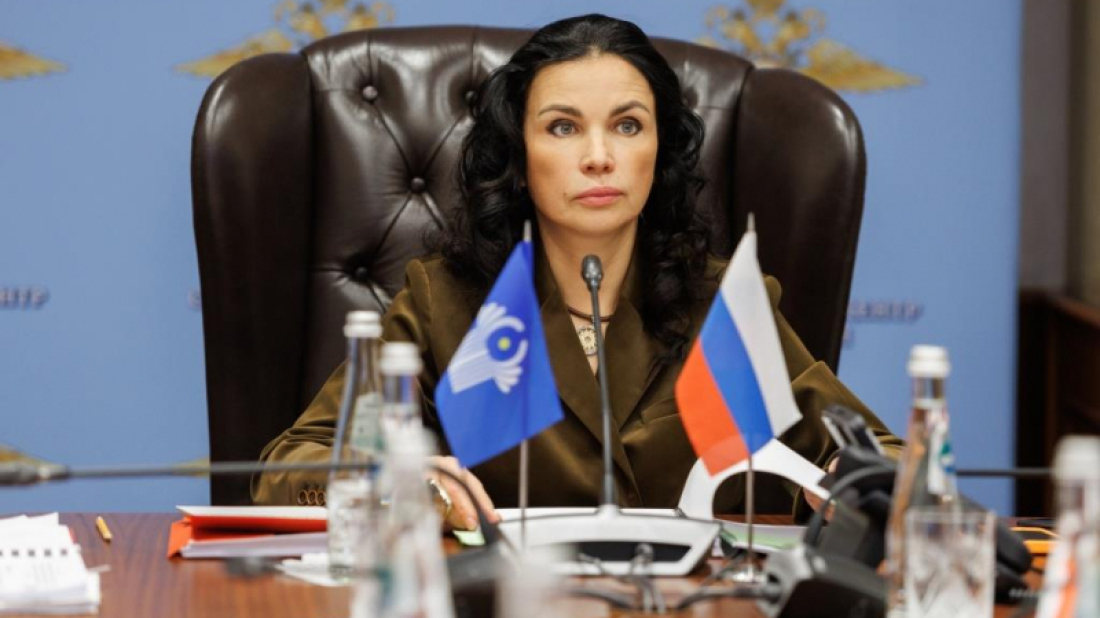Georgia to seek facts after U.S. seizure of Russian‑flagged oil tanker
Georgia has said it will clarify the circumstances surrounding the U.S. seizure of a Russian‑flagged oil tanker in the North Atlantic and is seeking...

Russia is moving to reform its migration system by scrapping work patents and tightening rules on the entry of migrant families, officials have announced.
The work-patent system has been central to Russia’s migration policy since 2010, when the government first introduced patents for foreign workers, especially those from Central Asia.
Patents were designed to legalize migrant employment while providing steady revenues to regional governments.
Today the system covers about 3 million workers, with roughly one-third employed in construction and housing and others working in food processing, manufacturing, agriculture, home help, transport and marketing.
Valentina Kazakova, head of the Main Directorate for Migration Issues at the Ministry of Internal Affairs, says that from January to May 2025 the federal budget received 63 billion roubles (about $693 million) in personal income tax from foreigners buying work patents — a 35% increase on the same period in 2024.
For the whole of 2024 migrants transferred 124 billion roubles (about $1.36 billion) to regional coffers. These payments are advance monthly payments made when migrants obtain patents and are paid directly into regional budgets.
During a meeting with leaders of the State Duma factions, President Vladimir Putin said the authorities were considering abolishing the patent system for migrant workers.
At the same session, Leonid Slutsky, the parliamentary leader of the Liberal Democratic Party, described the social pressure some regions say migration creates.
“If we visited what residents themselves call the ‘Khilok ghetto’ in Novosibirsk, we saw migrants living in unsanitary conditions. Antisocial behaviour, rudeness and immorality are widespread.
Our proposal is to limit the entry of migrant families without Russian citizenship. These huge families come in, their children create disorder in schools and queues in hospitals and social institutions. You came here to earn money — fine. But your big family has nothing to do here”. he said.
The government’s economic team has underlined that migration should remain primarily a short-term labour solution.
Speaking at the All-Russian Week of Occupational Safety, Maxim Reshetnikov, the Minister of Economic Development, underlined that the idea that migration should remain temporary and transactional:
“If we develop under labour shortages, then of course, in some situations, we will need to attract migrants. But the principle should be: come, work, leave.
They earn money here and then go home. We do not need their families, and we are not obliged to educate their children. Therefore, the main task is to increase labour productivity.”
Meanwhile, the Ministry of Labour has proposed cuts to quotas for foreign workers in several industries. In construction the permitted share of migrant labour could fall from around 80% to 50%, while food services may face caps and sectors such as the retail trade in alcohol and tobacco could be closed to foreign workers altogether.
The measures are being presented to open opportunities for local workers and to reduce social pressure.
The number of foreign workers in Russia include roughly 800,000 the in construction, 350,000 in trade and manufacturing sector, 193,000 in logistics and warehousing industry, and 63,000 in agriculture.
As at 2025, the largest share of labour migrants by region in Russia came from Uzbekistan (23.3%), followed by Tajikistan (16.7%) and Kyrgyzstan (10.4%).
As proposed reforms gain traction, both the migrant workforce and the regions that rely on patent revenues could face significant challenges.
Open-source intelligence (OSINT) sources reported a significant movement of U.S. military aircraft towards the Middle East in recent hours. Dozens of U.S. Air Force aerial refuelling tankers and heavy transport aircraft were observed heading eastwards, presumably to staging points in the region.
Snow and ice stalled travellers in northwest Europe on Wednesday, forcing around a thousand to spend the night in Amsterdam's Schiphol airport but delighting others who set out to explore a snow-blanketed Paris on sledges and skis.
Diplomatic tensions between Tokyo and Beijing escalated as Japan slams China's export ban on dual-use goods. Markets have wobbled as fears grow over a potential rare earth embargo affecting global supply chains.
Two people have been killed after a private helicopter crashed at a recreation centre in Russia’s Perm region, Russian authorities and local media have said.
U.S. President Donald Trump has warned that Iran could face a strong response from the United States if its authorities kill protesters amid ongoing unrest.
Türkiye’s UN envoy called on the international community on Thursday to maintain strong support for the elimination of Syria’s remaining chemical weapons, stressing that the task is both a legal obligation and a critical priority for regional security and humanitarian protection.
Georgia has said it will clarify the circumstances surrounding the U.S. seizure of a Russian‑flagged oil tanker in the North Atlantic and is seeking information on its Georgian crew members.
In a bold move to prioritise American interests, President Donald J. Trump has signed a Presidential Memorandum directing the withdrawal of the United States from 66 international organisations, including both non-United Nations entities and several UN-related bodies.
The U.S. Department of Homeland Security has said it may deploy additional federal agents to Minnesota following the fatal shooting of a woman by an Immigration and Customs Enforcement (ICE) officer.
UN Secretary-General Antonio Guterres expressed regret on Thursday over the decision by the Trump administration to withdraw from 31 entities linked to the United Nations.
You can download the AnewZ application from Play Store and the App Store.

What is your opinion on this topic?
Leave the first comment